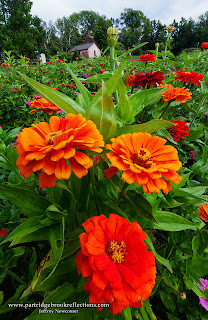 |
| Baker Brook in Newfane Vermont |
Rant-Free Blogging
 |
| Mount Monadnock, Marlboro New Hampshire |
 |
| Rosaly's Garden Peterborough NH |
Magic of Auto-Blend
| Auto-Blend Layer Masks White Exposes the Underlying Layer |
| After Patching |
 |
| Area of Soft Focus Following Blending |
Applying the Patch
 |
| Patching Layers (red) |
Wow. I have come to think of this approach as rather simple, but when I try to explain it, I'm not sure even I will be able to figure it out next time. The only way to understand the technique is to try it on appropriate images. I guess the easiest way to sum this up is that you are creating a separate set of aligned, but unblended layers to use as the source for corrections to the original blended results. This does result in a very large image file with many layers, but once the automatic and manual blending is done, you can flatten the layers and ideally enjoy a lovely image with otherwise impossible depth of field.
I hope these last two posts have opened up some of the potential of the digital darkroom to manage the challenges of controlling depth of field. The only way to master these techniques is to get in there and play with the tools. You have nothing to loose except that fuzzy foreground.
 |
| Chesterfield, New Hampshire |

No comments:
Post a Comment